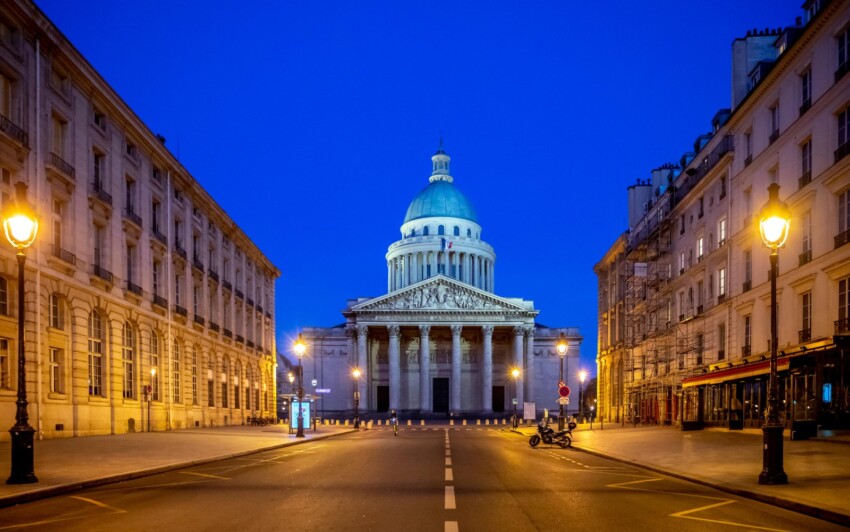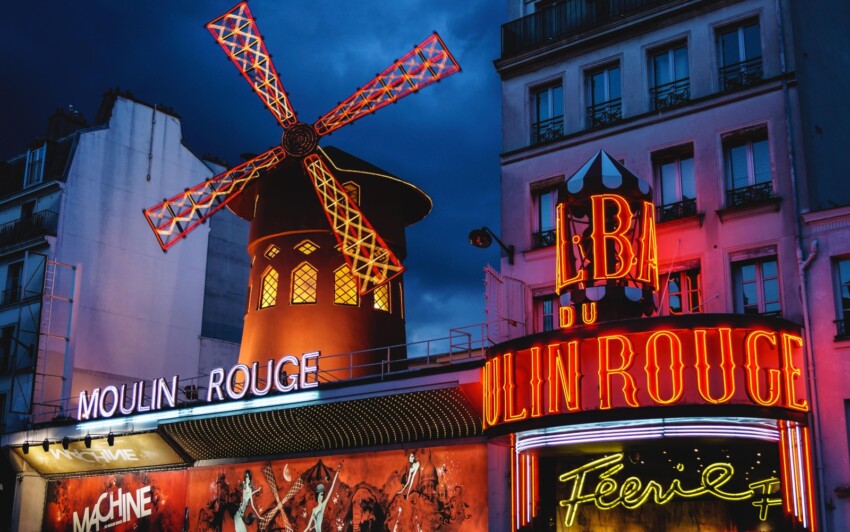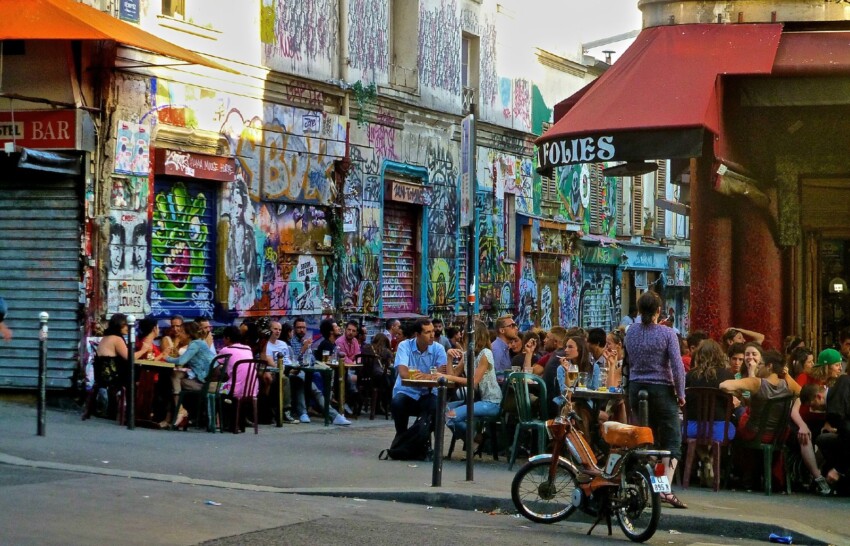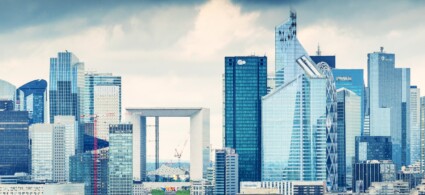

The city of Paris is divided into 20 autonomous and numbered arrondissements or municipal districts. However, this topographical subdivision does not always correspond to specific districts.
In fact, most of the districts of Paris have a precise historical and cultural identity to the point of being called ‘villages’, each with its own particular atmosphere. Some neighbourhoods such as Pigalle or, Belleville straddle two different arrondissements.
The arrondissements are identified by a progressive number according to a spiral that starts from the city centre and proceeds clockwise.
Each of the 20 arrondissements has its own ‘town hall’ called the Mairie d’arrondissement with its own council and mayor, while the main one in Paris is called the Hôtel de Ville and is located in the 4th Arrondissement.
Below is a list of the 20 Arrondissements: for each one we have listed the main attractions to visit and the special features of the area.

The 1st arrondissement is the historical heart of Paris and is mainly on the right bank. It is easily recognisable as it contains some of the French capital’s most famous attractions such as the Louvre Museum, home to masterpieces such as the Mona Lisa and Venus de Milo, the Palais Royal with its majestic Jardin des Tuileries, the elegant Place Vendôme and runs all the way to the Les Halles (Châtelet) shopping centre, where the city’s largest fruit and vegetable market once stood.
This arrondissement also includes and encompasses part of the Île de la Cité : thus, the striking multi-coloured stained glass windows of the Sainte-Chapelleand the enchanting Square du Vert-Galant, which juts out at the tip of the island, belong to it.
As one of the areas most frequented by tourists, it has also become the least authentic. Rue de Rivoli has turned into a succession of poorly made souvenir shops and here you will find almost only tourist-trap establishments alternating with almost inaccessible starred restaurants.
If you like Japanese restaurants, you’ll have to head to rue Sainte-Anne: here you’ll find plenty of them, and they’re little known to tourists.

This arrondissement, the smallest in Paris, is known for its elegant architecture and for being the financial centre of the city.
The Paris Stock Exchange (Palais Brongniart) is the main attraction, along with the passages, the 19th-century glass-roofed streets with a charming vintage feel.
In fact, the 2nd arrondissement, the smallest in Paris, is home to many passages, including the Passage des Panoramas, one of the city’s oldest, full of unique shops and cosy cafés.
Here you can enjoy exploring quaint shops such as the old Stohrer bakery, which dates back to 1730, or the Parisian clothing district, the Sentier, where you will find many quaint bars and bistros.
If you master the French language well, you might consider attending a cabaret show or performance at one of the many theatres in the Grands Boulevards area.

Known for the Marais, one of the oldest and most charming neighbourhoods in Paris, the 3rd arrondissement is home to the Picasso Museum and the Musée Carnavalet, which tells the city’s history. The Jewish quarter, with its lively Rue des Rosiers, is famous for its delicious falafel.
It has evolved from a historic and traditional neighbourhood into a trendy, ‘gay friendly’ area where you will find all the latest trends, a thousand opportunities for entertainment both day and night, quaint cafés, artists’ studios and boutiques of up-and-coming artists.
Browse around the Passage du Grand Cerf gallery, where you will find antique shops, Indian handicrafts and a flea market.

This arrondissement comprises the southern part of the Marais, with the beautiful Place des Vosges and theHôtel de Ville (Paris’ City Hall) and, above all, the Notre-Dame Cathedral, which, despite its renovation, remains a must-see attraction, as does the Centre Pompidou, known for its innovative architecture and modern art collections.
The area is particularly atmospheric at sunset, to be contemplated from one of the many bridges over the river, or simply lingering in charming little squares such as Place du Vert-Galant, with a spectacular view of the Louvre, or taking a picturesque boat ride on the Seine.

Also known as the Latin Quarter, the 5th arrondissement is the intellectual heart of Paris, with the Sorbonne University and the Panthéon, where many great French personalities of history and culture are buried. The busy streets teem with bookshops and historic cafés such as Café de Flore.
Undoubtedly, this is one of the liveliest areas of Paris: you can explore its many bookshops and record shops, admire the fabulous art deco cinemas and postcard-perfect bistros, or stay up late in the jazz clubs. Here you will come into contact with the most cosmopolitan soul of the capital. It is no coincidence that the Grand Mosque of Paris, which serves as a cultural and gastronomic hub with a hammam reserved for women only, is also located here.

This elegant arrondissement is known for the Jardin du Luxembourg and its luxury boutiques along Boulevard Saint-Germain. We are in fact in the heart of the Saint Germain de Pres district, full of literary cafés, bookshops, jazz clubs and bistros, the nerve centre of the intellectual and artistic fervour of bohemian Paris, which over the years has become overly touristy and very commercial.
The Saint-Sulpice Church and the Luxembourg Museum are other must-sees.

The Eiffel Tower is the seventh arrondissement’s most famous attraction, but don’t forget the splendid Musée d’Orsay, Musée du Quai Branly-Jacques Chirac, and Musée Rodin.
Don’t forget the Les Invalides monument, with Napoleon’s tomb, and the Champ de Mars, perfect for a picnic with a view of the tower.
Lose yourself in the beautiful rue St Dominique and rue Cler, famous for delicatessens overflowing with local produce and fabulous high-end restaurants.

The opulent Champs-Élysées runs through the vast 8th arrondissement, ending at the Arc de Triomphe.
The Grand Pala is and Petit Palais offer world-class art exhibitions and must-see attractions such as the Musée de l’Orangerie while the Place de la Concorde and the Church of the Madeleine are other important stops in the district.
It is undoubtedly the most luxurious, elegant and busy area of Paris, so packed with clubs, shops and glitzy boutiques that it has given the capital the nickname Ville Lumiere.

The 9th arrondissement is famous for the Opéra Garnier, an architectural masterpiece with unprecedented interior decoration.
The Galeries Lafayette and Printemps department stores are shopping havens, while the Pigalle district, with the famous Moulin Rouge, offers a lively, bohemian atmosphere.
Gourmets should not miss Rue des Martyrs, where food is the real star with cheese shops, bakeries, pastry shops and many shops selling French delicacies.

This arrondissement is known for its canals, especially the Canal Saint-Martin, which is ideal for romantic walks, stopping off at the many youth clubs, trendy shops and looking for the views immortalised in the film The Fabulous World of Amelie.
TheGare du Nordand Gare de l’Est are important railway hubs, while the district is full of trendy cafés and ethnic restaurants.

The 11th arrondissement is famous for its nightlife, with numerous bars and clubs along Rue Oberkampf.
Little known to mass tourism, the neighbourhood is a bubbling and changing hothouse of designers, graphic designers and multimedia artists, producing innovation and creativity that is concentrated in the Atelier des Lumières . Here you will also find a vibrant nightlife, including craft breweries, trendy restaurants, live music venues and DJs, and niche music clubs.
A stroll to the Arsenal Port, a small harbour that harbours corners of peace and tranquillity, is a must, while the Marché des Enfants Rouges, the oldest covered market in Paris, is ideal for a gourmet break.

The Bois de Vincennes, one of the largest parks in Paris, is a green oasis perfect for outdoor activities: the Grand Pagoda, home to the International Buddhist Institute, an old wooden colonial structure from the 1930s overlooking a small lake, is interesting.
The Promenade Plantée, an elevated promenade, offers lovely views, while the modern Opera Bastille and the Aligre market are some notable attractions.
Don’t miss Bercy Village, a former wine warehouse turned into a hub full of restaurants, clubs and shops. Also worth seeing is Gare du Lyon, with its clock tower, built for the 1900 Universal Exhibition.
This arrondissement is known for the Asian Quarter: with its authentic restaurants and shops it is home to the largest Chinatown in Paris. Everything here speaks of Asia and even the McDonald’s signs are in Chinese: the establishments are surrounded by skyscrapers and it will be a lot of fun to hunt for street art, visit the Bibliothèque Nationale de France or observe the conversion of former industrial areas, such as theformer Station F railway depot, into a trendy complex.
Butte-aux-Cailles, a picturesque hillside district with charming narrow streets and murals, is also located here.

The Montparnasse Tower offers a breathtaking panoramic view of Paris. The Catacombs of Paris, with their tunnels of charnel houses, are a unique and fascinating attraction. The Montparnasse district is also known for its historic cafés, frequented by artists and writers of the past.
It is a less-touristy area that offers many highlights for art lovers, such as th eGiacometti Institute or the incredible Fondation Cartier space, which hosts some of the best contemporary art exhibitions in the city.
The 15th arrondissement is residential but offers attractions such as Parc André Citroën and the shopping-friendly Rue du Commerce.
The Porte de Versailles exhibition centre hosts major fairs and events.

This elegant arrondissement is home to the Trocadéro, which offers one of the best views of the Eiffel Tower. The Bois de Boulogne is perfect for walks and picnics, while the Marmottan Monet Museum offers a splendid collection of Monet’s works.
Also not to be forgotten is the Fondation Louis Vuitton, designed by Frank Gehry, a landmark for the best contemporary art exhibitions. It also houses the Jardin d’Acclimatation, a wonderful park for children with rides and wild animals.
In the southern part of the arrondissement, you can visit the most important Parisian sports facilities such as the Parc des Princes for football, the Jean-Bouin for rugby and the Stade Roland Garros, where the French Open tennis tournament is held.
The Parc Monceau, with its picturesque gardens, is one of the main attractions of the Batignolles district, known for its cosy cafés and bohemian atmosphere. The Étoile area, close to the Arc de Triomphe, is perfect for exploring the elegant boulevards without the large throngs of tourists.
This arrondissement, hardly ever taken into account by mass tourism, represents the ecological soul of Paris, with its architecturally redeveloped post-industrial areas, numerous parks and gardens, artisan workshops, luxury boutiques and trendy restaurants.

This arrondissement coincides with the Montmartre district. Always the heart of the bohemian soul of Paris, it is an area that winds up the hillside, between shady little squares and narrow streets choked with tourist shops.
The area also includes part of Pigalle, the red light district of Paris, where you can find numerous sex shops and striptease clubs, not very recommendable at night.
Not many people know, however, that the African quarter is also located here, with the only market of typical products from the black continent, the Marché Barbès. There are many jazz clubs and also the famous red light district of Pigalle with the equally famous Moulin Rouge.

This area is most famous for its canals and two large public parks, the Parc des Buttes Chaumont, an oasis of greenery with waterfalls and artificial caves and the Parc de la Villette, inside which are the Cité des Sciences et de l’Industrie, an interactive museum perfect for families, the City of Music and the Paris Conservatory of Music and Dance.
Also a stone’s throw away is the Canal de l’Ourcq, ideal for relaxing strolls along the water and the Jourdain district, with its unmistakable indie atmosphere and creative boutiques, bars and restaurants, contrasts with the Mouzaïa district, with the serene tranquillity of its pretty detached houses surrounded by gardens.

Known for its vibrant and multicultural atmosphere, the 20th arrondissement is home to the Père Lachaise cemetery, where celebrities such as Jim Morrison and Oscar Wilde rest.
Don’t miss the Belleville district, famous for its art scene, lively markets and multi-ethnic soul depicted in the novels of Daniel Pennac, one of France’s greatest contemporary writers. From Belleville Park, located on the hill of the same name, you can admire the Eiffel Tower from afar.
Discover Paris through the eyes of expert guides who will take you on a tour of the city's hidden treasures. Participating in a free tour will allow you to capture the true essence of Paris.
The free tours are a viable alternative to traditional guided tours. They work like this: participation is free and at the end of the visit you can leave a tip at your discretion. Below you will find our favourite free tour, otherwise you can see the full list by visiting this page.
City Card allow you to save on public transport and / or on the entrances to the main tourist attractions.








